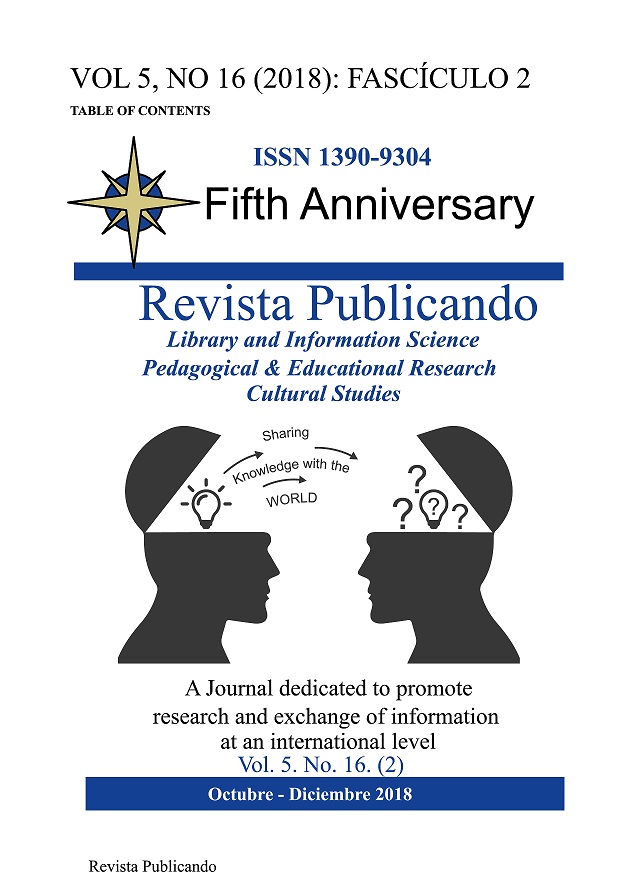Resumen
Using solar energy has been increasing in the last decade. This has increased researcher”™s motivation to investigate on solar cells and improve terms of its use. Such modern methods in this field are to use smart methods to operate and track power maximum point. In this article, the smart method based on the neural network to track power maximum point even in shade conditions is used. Considering partial shade effect and maximum power point tracking in these conditions, using neural network helps to improve cell operation and decrease uncertainty effect in the cell. This method simulation has been done in MATLAB software.
Referencias
Kota, Venkata Reddy, and Muralidhar Nayak Bhukya. "A novel linear tangents based P&O scheme for MPPT of a PV system." Renewable and Sustainable Energy Reviews (2017).”
B.J. Huang & W.L. Ding & Y.C. Huang,"Long-term field test of solar PV power generation using one-axis3- osition sun tracker", Solar Energy , Vol. 85, 1935–1944, 27 May 2011.
L. Piegari & R. Rizzo, "Adaptive perturb and observe algorithm for hotovoltaic maximum power point tracking" IET Renew.Power Gener, Vol. 4, pp. 317–328, 2010.
Neil S. D”™Souza & Luiz A.C. Lopes & XueJun Liu," Comparative study of variable size perturbation and observation maximum power point trackers for PV systems" , Electric Power Systems Research, Vol. 80 , pp. 296–305 , 2010.
W. Xiao & W. G. Dunford, "A modified adaptive hill climbing MPPT method for photovoltaic power systems" in Proc. 35th Annu. IEEE Power Electron, pp. 1957–1963 , 2014.
Fangrui Liu & Shanxu Duan & Fei Liu & Bangyin Liu & Yong Kang, "A Variable Step Size INC MPPT Method for PV Systems" IEEE Travs. Electron, Vol. 55, Jul. 2011.
ESU González, JVV Antúnez (2016). Bioética como marco de la responsabilidad social en hospitales públicos. Opción, Año 32, Especial No.12 (2016): 830-856.
T.Noguchi S.Togashi. "Short-current pulsebased adaptive maximum-power-point tracking for a photovoltaic power generation system", Electrical Engineering in Japan,Vol. 139, pp. 65-72, 2012.
Ahmad, J,"A fractional open circuit voltage based maximum power point tracker for photovoltaic arrays". IEEE International Conference on Software Technology and Engineering", pp. 247–250, 2010.
Dondi D & Bertacchini A & Brunelli D & Larcher L & Benini L ,"Modeling and optimization of a solar energy harvester system for selfpowered wireless sensor networks", IEEE Transactions on Industrial Electronics, Vol. 55, pp. 2759–2766, 2015.
G Mussabekova, K Issayeva, Z Oralova, U Saparbayeva, N Faiziyev, B Mutaliyev (2018). Hypothetical model of the development of a future teacher as a humanist (on the basis of humanitarian subjects). Opción, Año 33, No. 85 (2018): 241-272.
Trishan Esram, Patrick L. Chapman. Comparison of Photovoltaic Array Maximum Power Point Tracking Techniques ,IEEE TRANSACTIONS ON ENERGY CONVERSION, VOL. 22, NO. 2, JUNE 2007.
Femia, Nicola, et al. Power electronics and control techniques for maximum energy harvesting in photovoltaic systems. CRC press, 2017.”
Mao, Mingxuan, et al. "Comprehensive improvement of artificial fish swarm algorithm for global MPPT in PV system under partial shading conditions." Transactions of the Institute of Measurement and Control (2017).
Golovchun A., Karimova B., Zhunissova M., Ospankulova G., Mukhamadi K.,, Content And Language Integrated Learning In Terms Of Multilingualism: Kazakhstani Experience, Astra Salvensis, Supplement No. 10, 2017, p. 297-306.
DEMIYEVA A.G., Custom in the system of sources of entrepreneurial law of the Russian Federation and international practice (by the example of the Eeu), Astra Salvensis, Supplement No. 10, 2017, p. 43-49.
Usted es libre de:
Compartir — copiar y redistribuir el material en cualquier medio o formato
Adaptar — remezclar, transformar y construir a partir del material
La licenciante no puede revocar estas libertades en tanto usted siga los términos de la licencia
Bajo los siguientes términos:
Atribución — Usted debe dar crédito de manera adecuada, brindar un enlace a la licencia, e indicar si se han realizado cambios. Puede hacerlo en cualquier forma razonable, pero no de forma tal que sugiera que usted o su uso tienen el apoyo de la licenciante.
NoComercial — Usted no puede hacer uso del material con propósitos comerciales.
CompartirIgual — Si remezcla, transforma o crea a partir del material, debe distribuir su contribución bajo la lamisma licencia del original.
